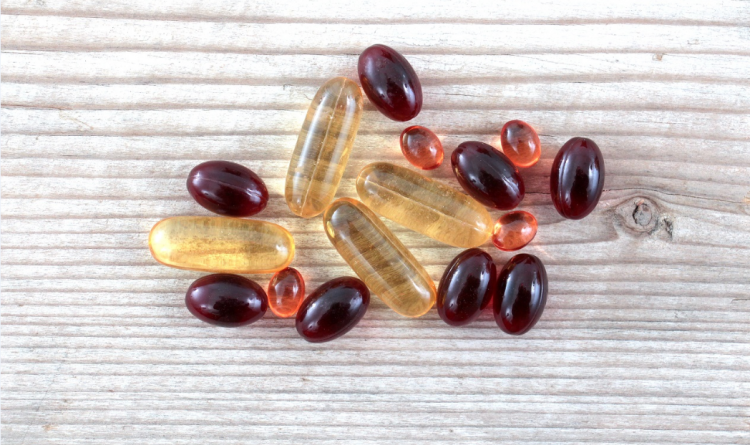Review proposes best omega-3 dose for blood pressure

The meta analysis, published this month in the Journal of the American Heart Association, found even higher doses above 3g of DHA/EPA omega-3 may yield greater blood pressure (BP)-lowering benefits, especially among hypertensive, hyperlipidemic, and older populations.
“This research helps to improve our understanding of the moderate effects of omega‐3 fatty acids on BP reduction,” the Macau University of Science and Technology-based researchers wrote.
“The seemingly J‐shaped associations between DHA+EPA dose and BP reduction in many subgroups might help reform preventive strategies for reducing cardiovascular risks in the general adult population.”
“However, individuals who are at high risk for developing cardiovascular diseases, such as those with hypertension, may be more responsive to the beneficial impacts of ω3 PUFA intake on reductions in BP.”
EFSA backs high-dose omega-3s
The findings tally with a European Union-authorised health claim that has since 2009 linked high doses of docosahexaenoic acid (DHA) and eicosapentaenoic acid (EPA) with “maintenance of normal blood pressure.”
For that claim, after conducting a systematic review of its own, the European Food Safety Authority’s Panel on Dietetic Products, Nutrition and Allergies (NDA) concluded that, “high doses of EPA + DHA (3g per day) have a short-term effect on systolic BP in subjects with untreated hypertension…and may have smaller, but statistically significant, effects in normotensives...”
The Panel found no issue with doses up to 5g/day, which it said, “do not increase the risk of reported adverse effects such as bleeding episodes, impaired regulation of glucose levels or impaired immune function.”
By comparison, the NDA noted its agreeance with ‘authoritative bodies’ that commonly recommended just 250-500mg of EPA/DHA per day to maintain “general cardiovascular health”.
Study details
The current study pooled data from 71 randomised, controlled clinical trials involving about 5000 adults published between 1987 and 2020.
Of the trials, 60 utilised parallel design while 11 employed a crossover design with an average intervention of ten weeks. A total of 43 trials included men and women, 25 just men and three just women.
Average age in the studies varied from 22 years to 86 years. About 80% of participants were ‘normal’ – they did not have hypertension or hyperlipidemia.
The typical intervention was fish oil, algal oil or purified fish oil ethyl esters. Others included meals of oily fish like salmon, tuna, trout or mackerel.
After a ‘cubic spline’ regression model was applied, the combined dose average came in at 2.8g/day. “A nonlinear association was found overall or in most subgroups, depicted as J‐shaped dose‐response curves.”
The researchers acknowledged previous meta analyses in the field had not produced, “significant favourable impacts on cardiovascular events, such as the risk of cardiovascular disease, myocardial infarction, or stroke".
They said this was due to the utilisation of ‘pooled meta-regression’ techniques or “grouping categories of exposure into separate meta‐analyses”, which they opined were bias-prone methods.
Cubic spline regression allowed non-linear condition-specific, dose estimations to be determined across a range of actual dosages used in a broad range of omega-3 studies.
“Included studies were pooled into a continuous dose‐response curve, and then the predicted effect of omega‐3 on BP was estimated from the curve at given doses (ie, 1 g/d, 2 g/d, 3 g/d, 4 g/d, and 5 g/d),” they wrote.
They found systolic BP (just pumped blood) and diastolic BP (blood returning to the heart), blood pressure reductions peaked in the 2-3g EPA/DHA per day range.
“The J‐shaped curves suggest that dosages of DHA+EPA at 2 g/d to 3 g/d are associated with the strongest changes in both SBP and DBP relative to the reference dose (0 g/d),” they wrote.
“In both SBP and DBP models, combined doses >3 g/d were associated with weaker or null changes in BP.”
The researchers noted “stronger effects” among over-45s.
They said the results hinted a greater role for omega-3s in controlling certain blood-based conditions.
“We found associations among both hypertensive and nonhypertensive groups, suggesting that ω3 PUFAs intake could be beneficial for controlling BP even before the onset of hypertension. This means that the intake of ω3 PUFAs could have implications on a person’s future risk of stroke, ischemic heart disease, and all‐cause mortality.”
GOED: flawed but valuable work
The Global Organisation for EPA and DHA Omega-3 (GOED) questioned the study’s finding that previous meta analyses had not linked omega-3s with “significant impacts on cardiovascular events”.
“Recent work by Manson et al and by Bernasconi et al has focused on the effect of dosage on cardiovascular outcomes and has found significant reductions in the risk of multiple outcomes, including coronary heart disease (CHD) events, CHD mortality, myocardial infarction (MI) and MI mortality,” GOED VP of Data Science, Aldo Bernasconi, PhD, explained.
“While these analyses have relied on simpler models, the preventative effect increases with dosage through the entire examined dosage range (0 – 5 mg/day) and does not appear to reach a maximum at any intermediate dosage.”
Dr Bernasconi added: “GOED welcomes the current findings as they corroborate and extend the results from the 2014 meta-analysis it commissioned to support the 2019 US qualified health claims for EPA and DHA omega-3 consumption and the risk of hypertension and coronary heart disease.”
Source: Journal of the American Heart Association
Published online: https://doi.org/10.1161/JAHA.121.025071
‘Omega‐3 Polyunsaturated Fatty Acids Intake and Blood Pressure: A Dose‐Response Meta‐Analysis of Randomized Controlled Trials’
Authors: Xin Zhang et al.
















